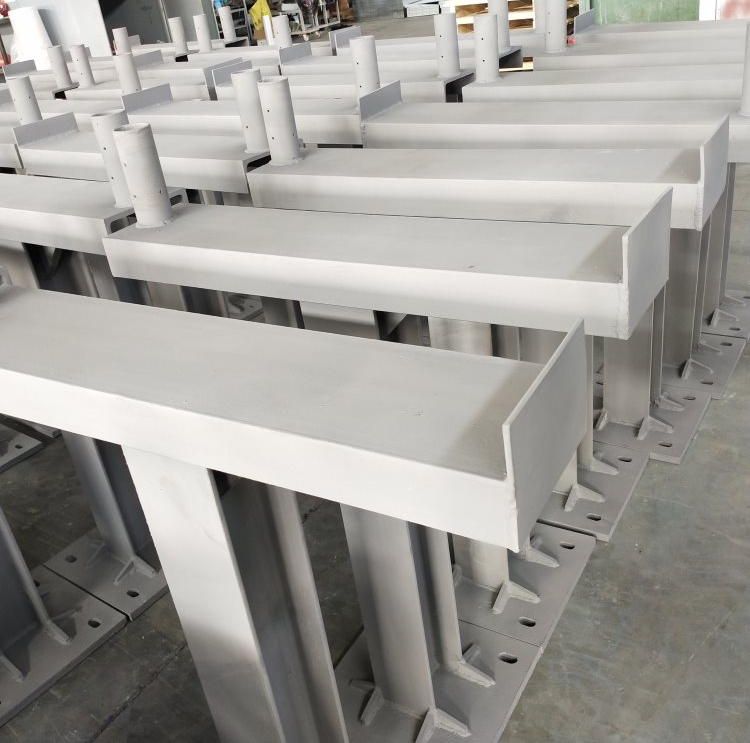What are the Basics of Metal Fabrication?
Metal fabrication encompasses a variety of processes to shape and assemble metal into finished products. At Qingdao TianHua YiHe Foundry Factory, we excel in delivering high-quality metal fabrication solutions across different industrial needs. Let's explore the fundamental aspects of metal fabrication:
1. Heavy Industrial Plate Metal Fabrication
Heavy industrial plate metal fabrication involves working with thick steel plates, ranging from 1” to over 4” in thickness. This process includes several fabrication techniques such as:
Plasma Cutting
Plasma cutting uses a high-velocity jet of ionized gas to cut through thick metal plates with precision.
Rolling
Rolling bends metal plates into cylindrical shapes or curves using rollers, ensuring structural integrity.
Welding
Welding joins metal pieces together through heat and pressure, crucial for creating durable structures.
Heat Treating and Finishing
Heat treating improves metal properties through heating and cooling, while finishing enhances aesthetics and durability.
Products from this type of fabrication include mining equipment, pressure vessels, and large tanks.

2. Light Industrial Sheet Metal Fabrication
Light industrial sheet metal fabrication focuses on thinner materials, ranging from 1/32” to 1/2” thickness. This type of fabrication includes processes like:
Laser Cutting
Laser cutting uses a focused laser beam to cut precise shapes and patterns in sheet metal.
Brake Forming
Brake forming bends sheet metal into desired shapes using a press brake, suitable for creating enclosures and OEM parts.
Welding, Anodizing, and Painting
These processes assemble, protect, and enhance the appearance of sheet metal products, such as computer enclosures and cases.
3. Heavy Structural Steel Fabrication
Heavy structural steel fabrication deals with large-scale structural components, including:
Sawing Cutting and Plasma Cutting
These methods cut through thick steel beams and plates, preparing them for assembly.
Drilling and Welding
Drilling creates holes for fasteners, while welding joins structural elements together securely.
Sandblasting and Painting
Sandblasting cleans and prepares steel surfaces for protective coatings, essential for applications in skyscrapers, bridges, and tunnel supports.

4. Light Structural Steel Fabrication
Light structural steel fabrication involves smaller-scale structural components:
Fabrication Processes
Similar to heavy structural steel processes, this includes cutting, drilling, welding, and finishing techniques.
Applications
Products include small buildings, bridges, platforms, and supports, where lighter materials meet structural demands.
5. Metal Fabrication Versus Machining
Metal fabrication focuses on cutting, forming, rolling, sawing, and welding metal to create structures and components. It differs from machining, which involves:
Detailed Work
Machining includes precise operations like milling, lathing, routing, and polishing for intricate part production.
Tolerances
Fabrication typically works within tolerances of .010” – .030”, while machining achieves tolerances as tight as .005” or smaller.
6.Advancements in Metal Fabrication
Metal fabrication has evolved with technological advancements, particularly with CNC and CAD integration:
CNC and CAD Integration
Computer Numerically Controlled (CNC) machines and Computer-Aided Design (CAD) software automate fabrication processes:
Automation
CAD drawings translate directly into machine instructions, optimizing efficiency and accuracy in fabrication.
Modern Techniques
Laser cutting and robotic welding enhance precision and productivity in manufacturing applications.
Metal fabrication remains integral across industries, from transportation to infrastructure, contributing to everyday products like automobiles, electrical panels, and architectural structures.
Qingdao TianHua YiHe Foundry Factory is committed to leveraging these advanced metal fabrication techniques to meet the diverse needs of our clients, ensuring exceptional quality and precision in every project.

